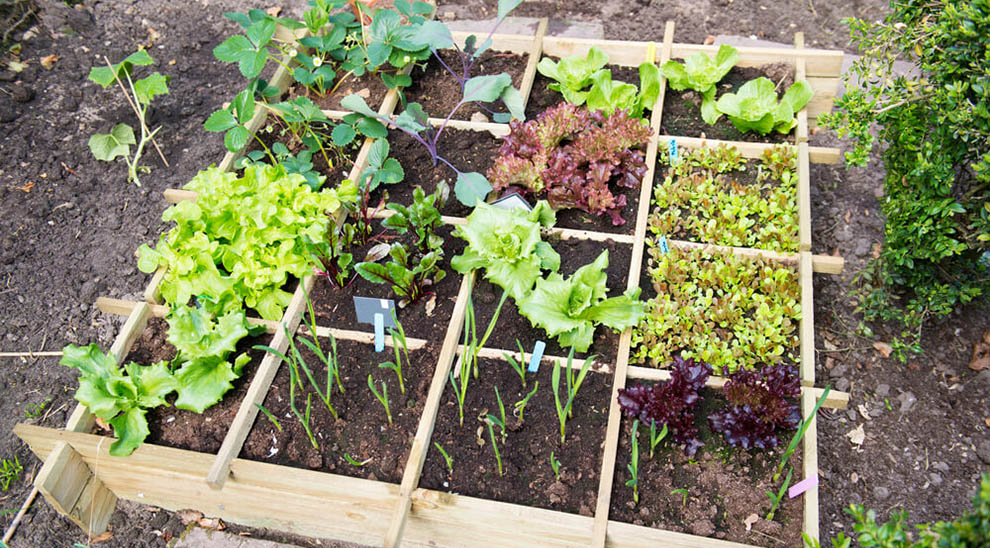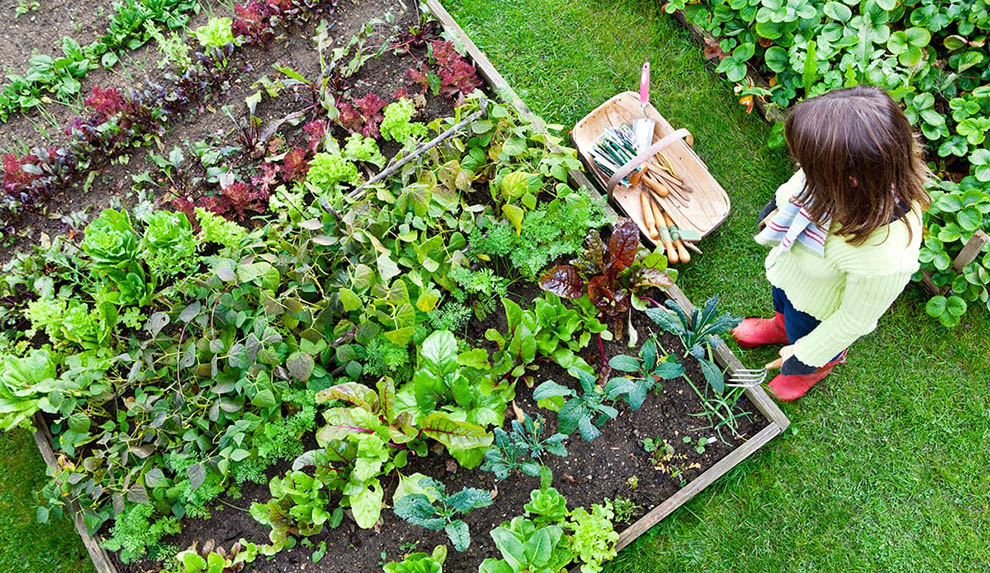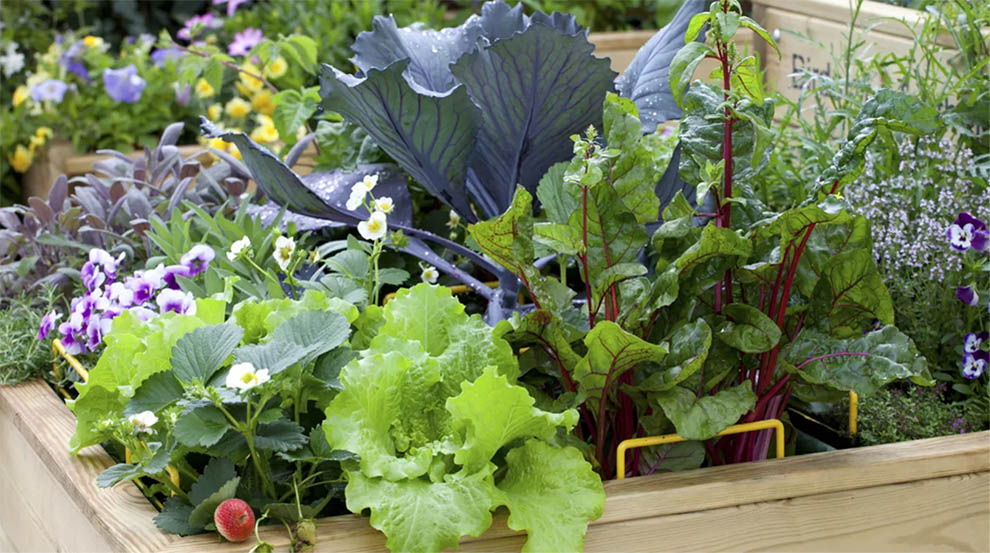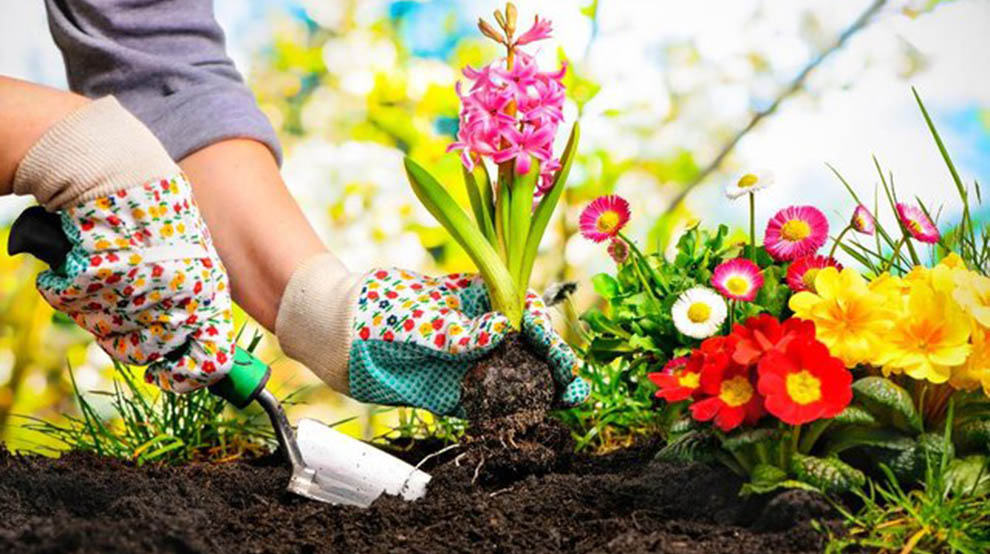How To Start A Small Vegetable Garden From Scratch

The trend of starting your own vegetable garden has been in for quite a few years now for all the right reasons! Growing your vegetables can help you save money, repurpose waste, and eat fresh and healthy, among other things.
Moreover, gardening is a very effective activity to help you relax and de-stress while also being productive! Now, most of us believe that kitchen gardens require a lot of space. Well, plants indeed need space to breathe and grow. However, if used creatively, even small spaces can prove to be great for growing edibles.
If you are new to gardening, you’ve come to the right place. Here is all you need to know about how to start a small vegetable garden from scratch.
In This Article:
- What Do I Need To Start A Small Vegetable Garden
- How To Start A Vegetable Garden In Small Space?
- How to Care for Your Small Vegetable Garden?
- Commonly Asked Questions
- Concluding Thoughts
How To Have A Successful Vegetable Garden – Points To Consider!

Before you begin the actual work, here are a few things you need to take into consideration.
1. Choosing The Right Location
While choosing an appropriate location for your kitchen garden, keep the following points in mind:
Sunlight
Vegetables love the sun! Usually, vegetable plants grow well in areas that get around 6 hours (or more) of direct light, as most vegetable plants require 6-8 hours of direct sunlight.
If you plan to grow leafy greens and salad greens, a spot with 4 hours or less sunlight will work well. To set up a balcony or rooftop garden, you can opt for container gardening.
If you have a south or west-facing balcony, long hours of sunlight will not be a problem. You can easily grow vegetables like eggplants and tomatoes but for a north-facing balcony, plant vegetables that require fewer hours of sunlight.
Water
Not getting enough water makes vegetables prone to issues like cracking open, blossom end rot, not seeding fruits, etc. Make sure the site you choose for your garden is near a water source. This will make it much easier to water your plants as often as required. Check out these watering cans for your garden.
Soil
The soil of the area you choose to grow your vegetables should be rich and free of stones and debris. This is vital for your plants because annual vegetables are heavy feeders, and good soil can help keep them strong and keep diseases and pest problems at bay.
Before you finalize the location, get the soil tested to see if there’s anything you need to add to it or if the soil pH needs any adjustment. Also, make sure the soil has high organic matter.
You can create raised beds to ensure great soil for your plants. However, wet soil is not good for the growth of your plants, so make sure the soil isn’t too heavy. Moreover, if the area isn’t level, you may need to create run-off barriers to avoid run-offs.
If you are planning to grow plants in pots and containers, make sure you choose the right soil mix that will support the growth and health of the plant.
If you have fruit trees in your garden you can use these fruit fertilizers to provide extra nutrition.
Accessibility
A lot of home gardeners prefer to grow their vegetables near their kitchen area or any other accessible and visible space in the house. This makes it easier for them to keep a check on the plants and remember to water them regularly. Also, it becomes convenient for them to go and pick the needed veggies as and when required while cooking.
2. Do You Want to go (grow!) Organic?
An organic garden has earned a reputation for being more complicated and less successful. However, that isn’t always the case. Organic gardening aims at preventing wastage and going 100% natural.
Most importantly, soil that is rich in organic matter beams with organisms that can be beneficial for your plants and you will need no extra manufactured fertilizers.
3. Consider What Are The Easiest Vegetables To Grow In A Small Garden vs. Your Preference
Another important part of figuring out how to start a small vegetable garden is deciding what you want to grow. There are a number of factors you must take into consideration while selecting the crops:
- Make sure to pick plants that are native to where you live.
- It makes much more sense to grow what you like to eat.
- Almost all vegetables can be grown in smaller areas. It is best to avoid plants that take up a lot of space (Like celery, maincrop potatoes, squashes). Check how to plant celery in a kitchen garden.
- Choosing to grow rather expensive vegetables can help you save a lot of money.
- You can also choose to grow vegetables that taste the best when fresh, like many legumes.
- Plants that grow quickly are also a great choice. A few ‘short-term’ plants that are a great option for beginners include spinach, fenugreek, parsley, mint, radish, and lettuce.
- If you are new to planting and gardening, you can start with herbs and microgreens, as these will yield faster results and help you stay motivated.
- Other common choices for a kitchen garden include tomatoes, chilies, eggplant, bitter gourd, capsicum, and okra. However, these plants require much more care and patience.
- If the space does not get enough sunlight, stick to herbs as these require fewer hours of direct sunlight.
4. Size and Space
There is no minimum or maximum space needed for a vegetable garden. But, since you are here reading on how to start a vegetable garden in a small space, we think you might have a space constraint.
So, it all depends on how much space you can dedicate to the task and what you plan to grow on it. For instance, a ten to twelve square feet space is enough to grow a few different types of plants.
If you use containers, their size will depend on the type and number of different veggies you are planning to grow.
For example, a container that is 12 to 15 inches in diameter and about 10 to 12 inches in height is suitable for growing leafy greens and salads. The container should ideally hold about 15-20 gallons (19 L) of potting medium to the volume.
However, if you are planning to grow bigger plants (chilies, tomatoes, eggplants, etc.), this pot size may be suitable for holding just one plant.
5. Planning a Budget
Think, “What are small vegetable garden ideas on a budget” and then get down to making a list. A few things you need to start your own vegetable garden include containers, seeds or seedlings, fertilizers, potting mix, gardening tools, etc.
But before setting a budget and going shopping for supplies, take a look around your house to see if there’s anything you could use.
- Organic materials like crushed fruit peels, tea bags, coffee grounds, vegetable peels, and disfigured ends can be used as compost.
- Use cracked eggshells and trays to start the seeds. Once the seedlings are ready for transplantation, the best part is that you put the waste in the compost. Learn here to make the best compost from tea brewer.
- Use neem oil, water, and a few drops of dish soap to make homemade pest control to keep your plants free from bugs.
- You can use seeds from vegetables for planting. However, this may seem difficult if you are new to all this. In that case, it is best to buy seeds online.
- Look online for affordable potting mix options.
Now that you know the most important points to consider on how to start a small vegetable garden, let us give you some out-of-the-box ideas for a small home vegetable garden.
Home Vegetable Garden Ideas for Small Space

Wondering how to start a vegetable garden in a small space? Then, we can help you out!
If planned properly, small spaces can also prove to be great for growing veggies. Here are a few tips to help you start a vegetable garden even if you do not have enough space.
1. Growing Vegetables In Containers
This option is ideal when you do not have enough space. You can keep these pots on your patio, front steps, balcony, or outside with the other plants.
If the containers you have are large enough to accommodate the plant when it’s completely mature, you could plant multiple things at the same time. While veggies like tomatoes., eggplants, and cucumber peppers require larger pots, herbs and leafy green can be sown in hanging pots and small containers.
2. Windowsill Gardens
Even if you have no outdoor space at all, start a windowsill garden! Herbs, lettuce, microgreens, and a few other frequently harvested vegetables can be grown indoors in spaces where there is enough sunlight.
3. Raised Vegetable Garden
Raised vegetable gardens are also effective for growing edibles in small gardens. If you don’t want to invest in the kits available in the market, you can use wood, sleepers, or bricks to frame the beds.
Use good-quality soil to fill the beds and then add the crops. Plant the crops in neat rows or any pattern you think will look aesthetic. You can also sow in some companion plants. Rotate the crops to keep away pests and diseases.
4. Vertical Vegetable Garden
Vertical vegetable gardens are another way to make the most of small spaces. You can choose to plant climbing crops. If the space has fences or walls, cover them with twine or wire to support peas, beans, espaliered fruit, etc. You can also attach pots to a wall, use multi-tiered plant stands, or invest in a commercial living wall setup. Learn more on how to build a retaining wall on a slope.
5. Use Old Tyres and Plastic Bottles
You can recycle old plastic bottles and tyres lying around as containers to plant herbs and small veggies. It gives a refreshing look to your garden as well as helps you recycle.
Related: How To Grow Mushrooms Without Spores, Korean Melon Growing Guide, Indoor Winter Veggies | Vegetables That Grow Below The Ground
How To Maintain Your Small Vegetable Garden?

Once you have figured to start a small vegetable garden from scratch, it’s time to do a little research on how to take care of your crops.
Here are a few tips to help you ensure that your plants stay healthy and strong.
- Keep proper spacing between multiple crops: If you are growing more than one veggie, make sure you have a balanced mix of plants with adequate spacing between them.
- Mulch: Once you have planted the veggies, make sure to mulch around them. This will help keep the weeds down, and the soil cool, add to compost, and improve the quality of your soil.
- Water: Water your plants regularly. However, be careful not to overwater your plants as this may lead to rot. It is advisable to water the roots of the plant and avoid the bloom and foliage to keep the plants healthy.
- Keep away the weeds: Make it a point to check for and pull out weeds at least once a week.
- Fertilize the plants: Add fertilizers to keep the plants healthy. You can go with natural fertilizers or buy online or locally.
- Deadheading: This involves removing the dead blooms on the plant. This can help increase the plants’ productivity by making room for new blooms.
- Look out for pests and diseases: Stay on alert to get rid of pests and diseases before they do any real damage to your plants.
- Provide adequate support: Some varieties tend to require external support to hold up once they start producing.
- Harvest on time: Once the plants begin to produce, harvest them promptly. The yield that is left for too long begins to rot.
- Proper Pruning: Prune your plants properly. While pruning, make sure to leave room for new growth without causing damage to the plants.
Still Confused – Let’s Hear What The Experts Have to Say!
Q. What supplies do I need to start a vegetable garden?
Ans. For starting your vegetable garden, you need seeds/seedlings, potting mix, containers, and fertilizers. You may also require gardening tools like a garden hoe, rake, shovel gloves, etc. You may also require a watering can or a hose and spray nozzle, tillers depending upon the size of your garden. Check the collection of best garden tillers.
Q. What vegetables grow well for beginners?
Ans. Easy-to-grow vegetables like radishes, tomatoes, beetroot, carrots, capsicums, and chilies are a great option for beginners. Herbs like parsley, peppermint, basil, and lemongrass are also great options. You can also add lettuce, potatoes, and kale to your garden. Learn here about how to grow lemongrass in your garden.
Q. How do you make a small vegetable garden?
Ans. If you want to learn how to start a small vegetable garden correctly, for starters you must choose a sunny spot in your yard, patio, or balcony. If you plan to grow your veggies in the ground, make sure the soil is rich. For containers, you need a good potting mix.
It is best to stick with compact and high-yielding varieties for a small kitchen garden. You can also select varieties that can be grown vertically (like vining crops) with some external support.
Practices like companion planting and succession planting will also help you make the most of the small space. Plants like herbs, lettuce, and microgreens can also be grown indoors on a windowsill!
Final Thought
Gardening requires time, effort, and, most importantly, a keen interest in this area. We suggest you start a veggie garden when you are ready to commit some hours of your daily schedule to this pursuit.
